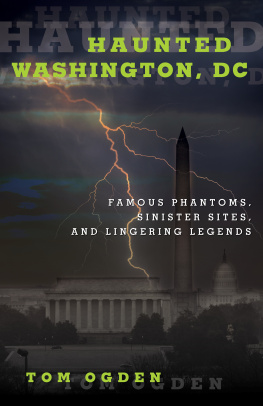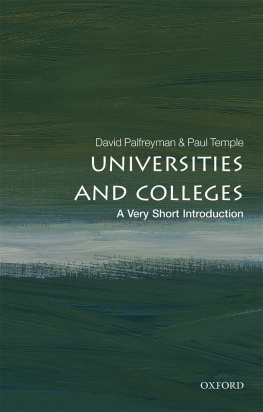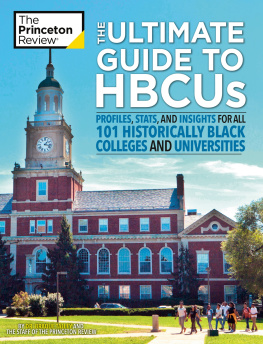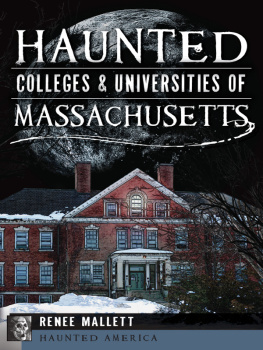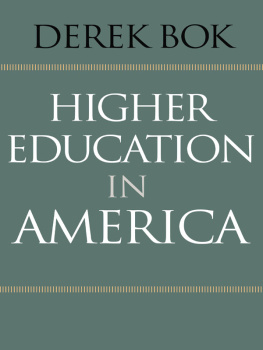For Dylan, Jordyn, Peyton, and Brayden
Copyright 2014 by Tom Ogden
ALL RIGHTS RESERVED. No part of this book may be reproduced or transmitted in any form by any means, electronic or mechanical, including photocopying and recording, or by any information storage retrieval system, except as may be expressly permitted in writing from the publisher. Requests for permission should be addressed to Globe Pequot Press, Attn: Rights and Permissions Department, PO Box 480, Guilford, CT 06437.
Editor: Meredith Dias
Project editor: Lauren Brancato
Layout artist: Lisa Reneson
Text design: Sheryl P. Kober
Library of Congress Cataloging-in-Publication Data is available on file.
ISBN 978-0-7627-9155-2
Printed in the United States of America
10 9 8 7 6 5 4 3 2 1
ACKNOWLEDGMENTS
Because I am a graduate of Penn State University, which has plenty of ghost stories, this project has been a labor of love from the very beginning.
I'd like to thank Joan Lawton, first and foremost, for suggesting that this would be a perfect book for me.
Thanks go out to Chuck and Bambi Burnes, Larry Cimino, Jean and Brian E. Hickey, Jim Petcoff, and Kim Roach for proposing several schools and sharing their experiences when I was compiling my list of haunted institutions.
Although I contacted many colleges and universities directly for information and clarifications, I'd especially like to thank the following for their assistance: Sharon S. Brown, assistant to the chair of the Department of Communications, Boise State University; Carol Dempsey, School of Drama, University of Washington; Jim Doran, archives associate, Boise State University; Steve Fisher, University of Denver; Sam McCord, ETSU Library, Eastern Tennessee State University; Andrew Prellwitz, archivist, Ripon College; John T. Rogers, communications and media relations manager, Johnson & Wales University; John Seden, facilities manager, San Francisco Arts Institute; and Christine Stamper, Communications Department, California State University, Stanislaus.
Thanks, too, to Mark Willoughby, Michael Kurland, Linda Robertson, and David Shine for their advice and feedback on the manuscript during the two-year writing process.
Finally, thanks to my editor Erin Turner, project editor Lauren Brancato, copyeditor Kate Hertzog, and Jane Sheppard for her cover design, along with all the rest of the Globe Pequot Press team. Most of all I must thank developmental editor Meredith Dias, whose necessary work on my manuscript went beyond the call of duty. Without her insights and incredible assistance, this book never would have made it to print.
INTRODUCTION
Going away to college is stressful enough. Most undergrads are still teenagers, with all the accompanying angst and confusion that entails. For many of the students, it's their first time living away from home and having to cope on their own. Suddenly, they have to get themselves out of bed in the morning; they have to learn to do laundry, budget their time, clean their own rooms.
And then on top of that, they have to deal with ghosts?
That's right: Ghosts are said to haunt hundreds of the four-thousand-plus colleges and universities in the United States. Obviously teens and young adults are thrilled and excited by such titillating fare. But what is it about college ghost stories specifically that make students want to pass them down from one class to another? Is it just tradition?
For many it's a temptation impossible to resist. They know that many campus newcomers are feeling vulnerable, or secretly petrified about being away from home. It's too much fun not to scare themand in the process alleviate their own anxieties. This may seem like hazing (however mild), but for the initiates, the indoctrination into their school's folklore provides a real sense of belonging. It also makes them the torchbearers of the tales to the next generation of students.
Parapsychologists have tried to categorize the many types of spirits said to haunt institutions of higher learning. (For some reason there are an inordinate number of ghost stories involving suicidesso many that if they had all actually occurred, it wouldn't have gone unnoticed. In fact, it would be seen as a national epidemic.) Among the archetypes are:
- Brokenhearted young lovers who pine away or kill themselves
- Murder and accident victims who don't know they've Passed Over
- Professors who apparently think tenure continues into the Next World
- Sports stars reliving their glory years
- Prized employees who just aren't ready to retire
- Alumni giving a whole new meaning to homecoming
- Native Americans who lived on land where the school now sits
- Soldiers who drilled, fought, or died on the grounds
- Souls buried in campus cemeteries or in unmarked graves
- Spectres from campus buildings that once were private homes
In addition, there are always the entities that can't be identified or whose presence can't be explained. As for why the spirits chose not to graduate to the Other Side, it seems their reasons are as varied as the ghosts themselves.
After years of being hidden in the shadows, these juicy tales of terror are now seeing the light of day. Students are starting to talk about their personal encounters with ghosts on social media. More and more colleges and universities are including the legends on their websites or exploring them in courses on comparative religion, psychology, sociology, and anthropology. Several campuses have student ghost hunter clubs. There was even a short-lived television series on Syfy called School Spirits that investigated hauntings on college and university campuses. And, of course, now there's Haunted Colleges and Universities.
Readers of the Globe Pequot Press Haunted books will immediately notice that the format of this one is completely different from others I've written for the series. During my research, I wasn't finding just two or three dozen stories. I was finding hundreds. So instead of highlighting just a few hauntings, in this work I've tried to include as many legends as space would permit. In the end, more than two hundred schoolsmany of them with multiple haunted sites on campusmade it into this book.
I've limited myself to post-secondary schools in the United States, and all of the institutions are still educating students. Several fascinating ghost stories were excluded simply because the college is closed, the spirit activity has stopped, or the once-haunted building has been torn down.
To make Haunted Colleges and Universities more manageable, I've separated the book into four sections. Believe me, it was by no means easy to decide where to draw the lines, especially with regard to border states. After much consideration, I used the regions of the country as defined by the US Census Bureau.
The first section, Nightshades of the North, concentrates on New England down to Pennsylvania. Part Two, Southern Spirits, features phantoms south of the Mason-Dixon Line from the Atlantic to the Rockies. Ghosts that haunt the Central States show up in Mysteries of the Midwest, and Wraiths of the West showcases spectres from the Rocky Mountains to the Pacific shore, along with those in Alaska and Hawaii.
Each listing begins with the college or university's name along with its address, main phone number, and website. This is followed by a short summary of the school's history. Every attempt has been made to verify the accuracy of basic information regarding the school and the hauntings. Where there has been conflicting data, I've sided with student and local newspapers, the school's website, and campus archivists, historians, or other representatives. To help you pinpoint the individual haunted sites, I've boldfaced their names the first time they appear in the text.


